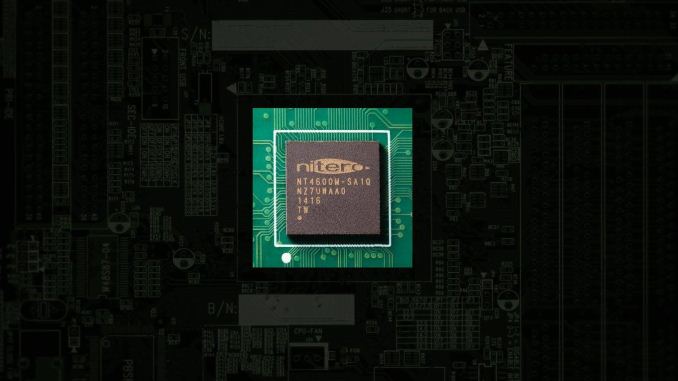WiGig Startup Nitero Launches NT4600 802.11ad Solution for Mobile Platforms
by Ganesh T S on July 16, 2014 7:00 PM EST
We have looked at multiple 60 GHz 802.11ad solutions from Wilocity over the last couple of years. A couple of weeks back, this market area received a fillip as Wilocity was bought by Qualcomm for around $300 million. Wilocity's chipsets are currently integrated inside a few business laptops from Dell, pointing to WiGig taking off after more than four years of development. With Qualcomm behind the technology now, it is quite likely that Wilocity's latest mobile-usage targeted products will integrate into a future Snapdragon platform. In this market state, we have a new startup that is pitching its first solution for WiGig.
Nitero, a fabless semiconductor company, is launching the NT4600 802.11ad solution today. Instead of starting off with the PC as a target platform, Nitero has designed this in Samsung's 28nm RF process to achieve 10x lower power consumption numbers compared to currently existing WiGig solutions for PCs. The implication is that the NT4600 can be directly used in tablets and smartphones.
The NT4600 supports TX/RX beamforming for operation even in non-line of sight conditions. It supports data rates up to 4.6 Gbps and provides a PCIe host interface for connecting to the app processor. Nitero also has Android drivers ready for their platform. The company is demonstrating the NT4600 to prospective customers now, with mass production expected in early 2015.
Source: Nitero










12 Comments
View All Comments
DanNeely - Friday, July 18, 2014 - link
If they go to software defined radio, adding arbitrary bands shouldn't be hard; but other than the proposed 5ghz expansion they're dreaming if they actually expect to get more spectrum released to them. I suppose they could subsume 802.11y to add the 40mhz wide 3.6ghz band (currently US only) to add a bit more spectrum that's more wall transmission friendly than 5ghz; but spectrum in useful frequency bands is already mostly spoken for and the phone companies have already convinced the FCC to let them have almost everything that is transitioned away from govt only (non)use.kappa - Friday, May 29, 2015 - link
The improvements are not based on new bandwidth. The maximum bandwidths and spatial streams will remain the same as in 11ac. The improvements are in the plumbing essentially, as the physical layer will have some significant upgrades to it. The peak throughputs will remain the same per user, but the idea is to improve system throughput in dense environments. It is a bit difficult to explain in a comment section. Since this is an IEEE process, more details are indeed available if you go the 802.11ax task group page (Of course, it may be a bit difficult to parse without the right back ground, and I would expect more white papers and high-level presentations to be available soon as the process becomes more heated).